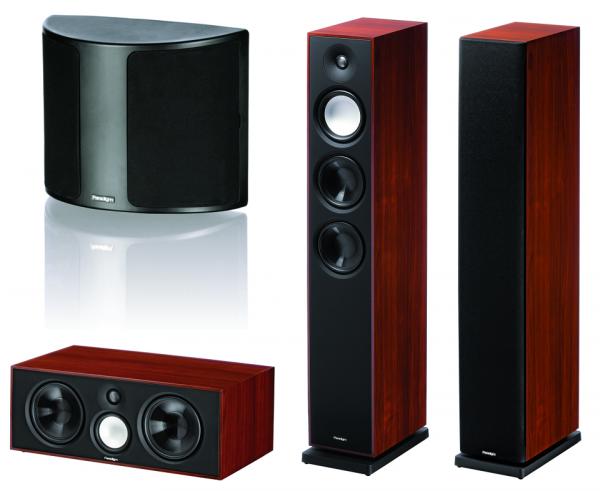Test Report: Paradigm Monitor Series 7 Speaker System

It seems like there have been Paradigm Monitor-series speakers roaming the earth since shortly after Rice and Kellog patented the dynamic loudspeaker as we know it in 1924. (The original practical design was by Peter Jensen, co-founder of Magnavox, some years earlier.) And as the arrival of its “Series 7” might suggest, the Canadian maker’s Monitor family does in fact date back a couple of decades. Like the speakers that preceded them, Paradigm’s new Monitor models are benchmarks of performance/value quotient in the best Canadian-speaker tradition: rationally priced, excellent-performing, technically advanced designs that compete very effectively with some far more costly “high-end” designs.
So what has changed for Series 7? According to Paradigm, the answer is smaller, deeper, broader: The new models are smaller in size (and so more décor-friendly), yet thanks to redesigned waveguides and the adoption of aluminum bass/mid cones and tweeter domes, they offer improved low-frequency extension and smoother, wider off-axis response. In other words, just like before — but more so.
Setup
Unboxing and setting up any floor-standing tower-based system is a bit of a project; fortunately, the suite that Paradigm assembled is of modest size and quite manageable. Being a three-way design, the Monitor Center 3 is a bit taller and heftier than typical 3-driver centers, and so requires decent support and line-of-sight clearance below the video display, which my low stand provided. The Monitor Surround 3, which Paradigm calls “bi-directional” (they are bipolar), went on my usual high, side-wall shelves, and I placed Paradigm’s DSP-3200 subwoofer in the usual spot just behind and outside of the right-front tower.
The DSP-3200 is a nicely compact 12-incher, with all the usual facilities plus one extra: a USB port. This enables Anthem’s optional Perfect Bass Kit ($299), a computer-driven sub-optimizer and room correction equalizer kit that includes a very nice calibration mike, a mike stand, and Windows software. Connecting the sub to the computer (using the supplied USB cables) and running the entire procedure takes about 15 minutes all told, and will mitigate the two or three most egregious peak/dip errors imposed by the average room. (It did so in mine.)
As Paradigm’s “entry-level” full-size range, the China-made (like virtually all price-competing loudspeakers today) Series 7s are plainly but carefully finished: precisely machined, with nice vinyl exteriors, soft-touch-finished baffles, and carefully detailed grilles. Unpretentious they may be, but the new Monitors neither feel nor look “cheap.”
- Log in or register to post comments




































































